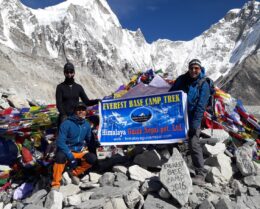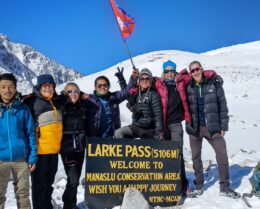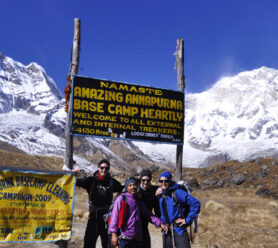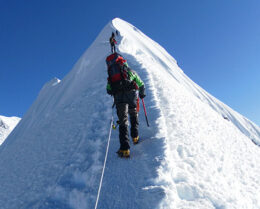The Ultimate Annapurna Circuit Trek: Packing Checklist
UPDATED ON 7 July, 2023
Are you planning to embark on the breathtaking Annapurna Circuit Trek? Additionally, this iconic trek in Nepal is renowned for its awe-inspiring mountain views, diverse landscapes, and rich cultural experiences. Moreover, as you prepare for this incredible adventure, one of the most crucial aspects is packing efficiently and effectively. Therefore, in this comprehensive packing checklist, we will guide you through the essential items to bring along on your Annapurna Circuit journey.
Overview

The Annapurna Circuit trek is a renowned adventure that takes you through the awe-inspiring landscapes of the Annapurna region in Nepal. Additionally, this trek is a remarkable journey that combines breathtaking mountain vistas, diverse terrain, and rich cultural encounters.
Moreover, starting from Besisahar and circumnavigating the Annapurna massif, the trek offers a variety of experiences. For instance, you can cross the challenging Thorong La Pass, explore the Annapurna Sanctuary, and reach the mesmerizing Tilicho Lake.
Furthermore, throughout the trek, you’ll encounter charming villages, terraced fields, suspension bridges, and monasteries. Consequently, you’ll have the opportunity to immerse yourself in the local culture and traditions.
Consequently, the Annapurna Circuit trek is a moderate to strenuous endeavor that rewards trekkers with stunning natural beauty, spiritual moments, and a profound sense of accomplishment. Moreover, it is an adventure that will leave you with cherished memories and a deep appreciation for the majestic Himalayas and the people who call this region home.
This is the reason we’ve created the Annapurna circuit packing checklist, which includes our packing advice, the items of clothing and equipment we couldn’t live without when trekking, as well as the essentials for hiking you’ll need.
Research and Preparation
Before delving into the packing checklist, it’s important to conduct thorough research about the Annapurna Circuit trek. To begin with, familiarize yourself with the route, trekking season, weather conditions, altitude variations, and the highest point of the trek, Thorong La Pass (5,416 meters).
Moreover, equipping yourself with this knowledge will help you make informed decisions about what to pack and ensure your safety and comfort throughout the journey.
Annapurna Circuit Packing Checklist | Clothing
When it comes to clothing, layering is key to tackling the varying temperatures and weather conditions encountered during the Annapurna Circuit trek. Here are some essential clothing items to include in your backpack:
- Base Layers: Moisture-wicking and quick-drying tops and bottoms made of synthetic or merino wool material.
- Insulating Layers: Fleece jackets, down jackets, or synthetic insulated jackets provide warmth during colder sections of the trek.
- Shell Layers: A waterproof and breathable jacket and pants to shield you from rain, wind, and snow.
- Trekking Pants: Lightweight, quick-drying pants with zip-off options for added versatility.
- T-shirts: Comfortable, breathable shirts for warmer days and lower altitudes.
- Undergarments and Socks: Moisture-wicking underwear and a few pairs of thick hiking socks to prevent blisters.
- Hat and Gloves: A warm beanie or hat and a pair of insulated gloves or mittens to protect against cold temperatures.
Footwear
Selecting the right footwear is crucial for a comfortable and enjoyable trekking experience. Make sure to invest in high-quality, broken-in hiking boots that provide ankle support and have a sturdy sole. Additionally, pack a pair of comfortable camp shoes or sandals for relaxing in the evenings at the tea houses along the trekking trail.
Annapurna Circuit Packing Checklist | Gear and Equipment
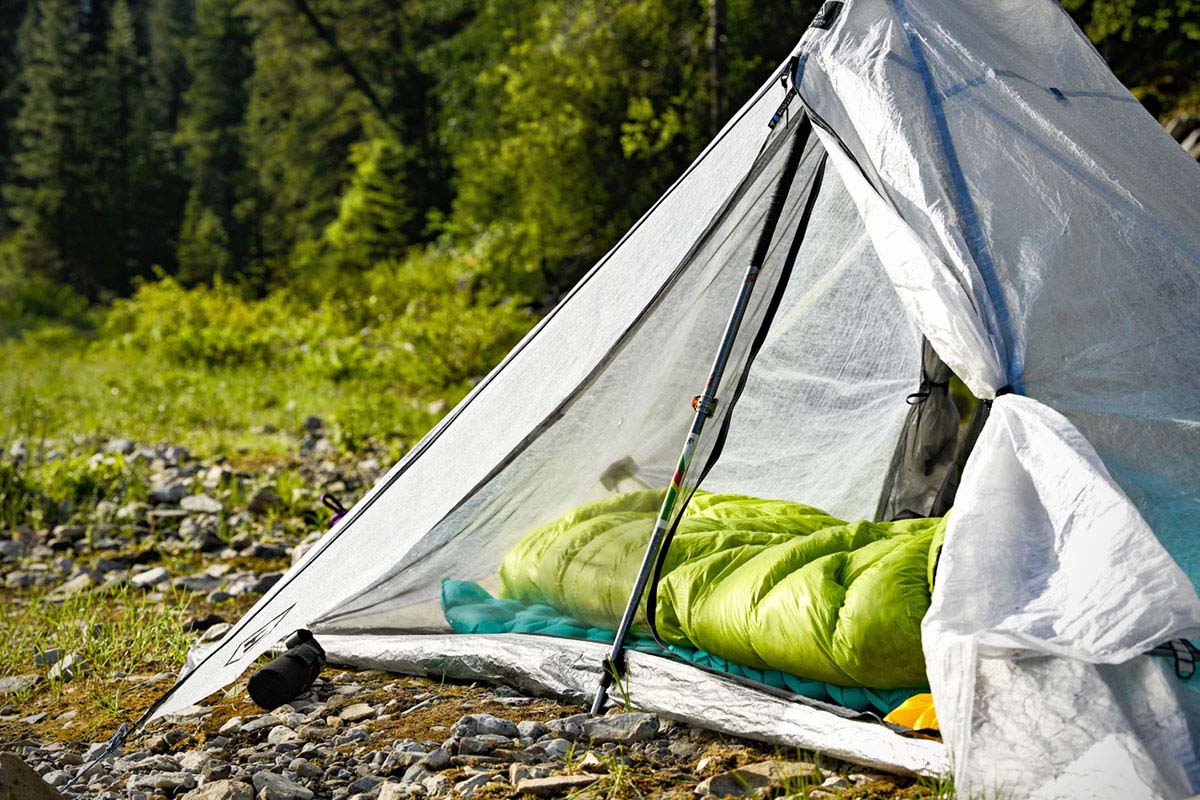
Carrying the right gear and equipment is essential for a successful trek. Here are some key items to include on your packing checklist:
- Backpack: A comfortable and durable backpack with a capacity of around 40-50 liters to carry your essentials.
- Sleeping Bag: A lightweight, warm, and compact sleeping bag suitable for temperatures below freezing.
- Trekking Poles: Adjustable trekking poles that reduce strain on your joints and provide stability, especially during steep descents.
- Headlamp: A reliable headlamp with extra batteries for navigating in low-light conditions or during early morning or late-night hikes.
- Water Bottles and Water Purification: Two durable water bottles and a water purification system or water purification tablets to ensure a safe and sufficient water supply throughout the trek.
- Sunglasses: UV-protected sunglasses to shield your eyes from the intense mountain sunlight.
- Sunscreen and Lip Balm: High SPF sunscreen and lip balm protect your skin from the harsh sun and dry air.
- Camera and Accessories: Capture the awe-inspiring beauty of the Annapurna Circuit with a camera, spare batteries, memory cards, and any other necessary accessories.
Annapurna Circuit Packing Checklist | Health and Safety Essentials

The Annapurna Circuit trek involves hiking at high altitudes, and it’s crucial to prioritize your health and safety. Here are some essential items for your health and safety kit:
- First Aid Kit: A comprehensive first aid kit that includes bandages, blister pads, antiseptic ointment, pain relievers, and any personal medications.
- Altitude Sickness Medications: Consult with your healthcare professional and consider carrying altitude sickness medications, such as acetazolamide, if recommended.
- Diamox: Diamox is a common medication used to prevent and alleviate symptoms of altitude sickness. Consult your doctor and consider carrying it.
- Water Purification Tablets: In addition to your water purification system, carry water purification tablets as a backup.
- Insect Repellent: An effective insect repellent to protect against mosquitoes and other insects.
- Hand Sanitizer: A travel-sized hand sanitizer to maintain proper hygiene, especially before meals.
- Personal Hygiene Products: Travel-sized toiletries, including toilet paper, wet wipes, and hand towels.
- Duffel Bag or Dry Bag: A waterproof duffel bag or dry bag to protect your belongings from rain and dust while using porters or yaks to transport your main backpack.
Annapurna Circuit Packing Checklist | Miscellaneous Items
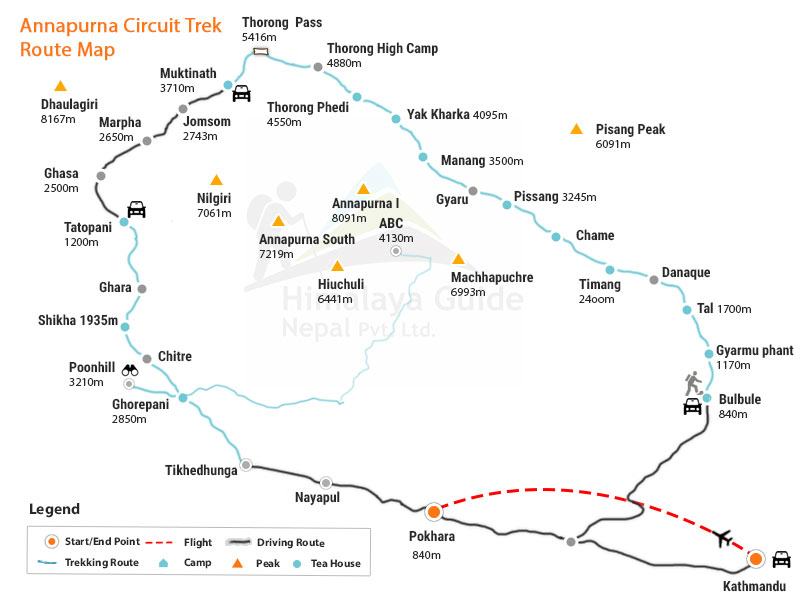
To complete your packing checklist, here are some miscellaneous items that can enhance your overall trekking experience:
- Trekking Map and Guidebook: Carry a detailed map and a reliable guidebook to navigate the trekking trail.
- Cash and Credit Card: Bring enough local currency (Nepalese Rupees) for small purchases along the way. Additionally, carry a credit card for emergencies.
- Travel Insurance: Ensure you have comprehensive travel insurance that covers trekking activities and includes medical evacuation.
- Power Bank: A portable power bank to keep your electronic devices charged during the trek.
- Snacks and Energy Bars: Pack some high-energy snacks and energy bars for quick nourishment on the trail.
- Trekking Poles Rubber Tips: Attach rubber tips to your trekking poles to prevent them from sinking into the ground on certain sections of the trail.
Annapurna Circuit Packing Checklist | Organizational Tips
To keep your backpack organized and make items easily accessible, consider using packing cubes or dry bags to separate clothing and gear. This will save you time and effort when searching for specific items, especially in colder temperatures or during adverse weather conditions.
What will you come across in this trek?
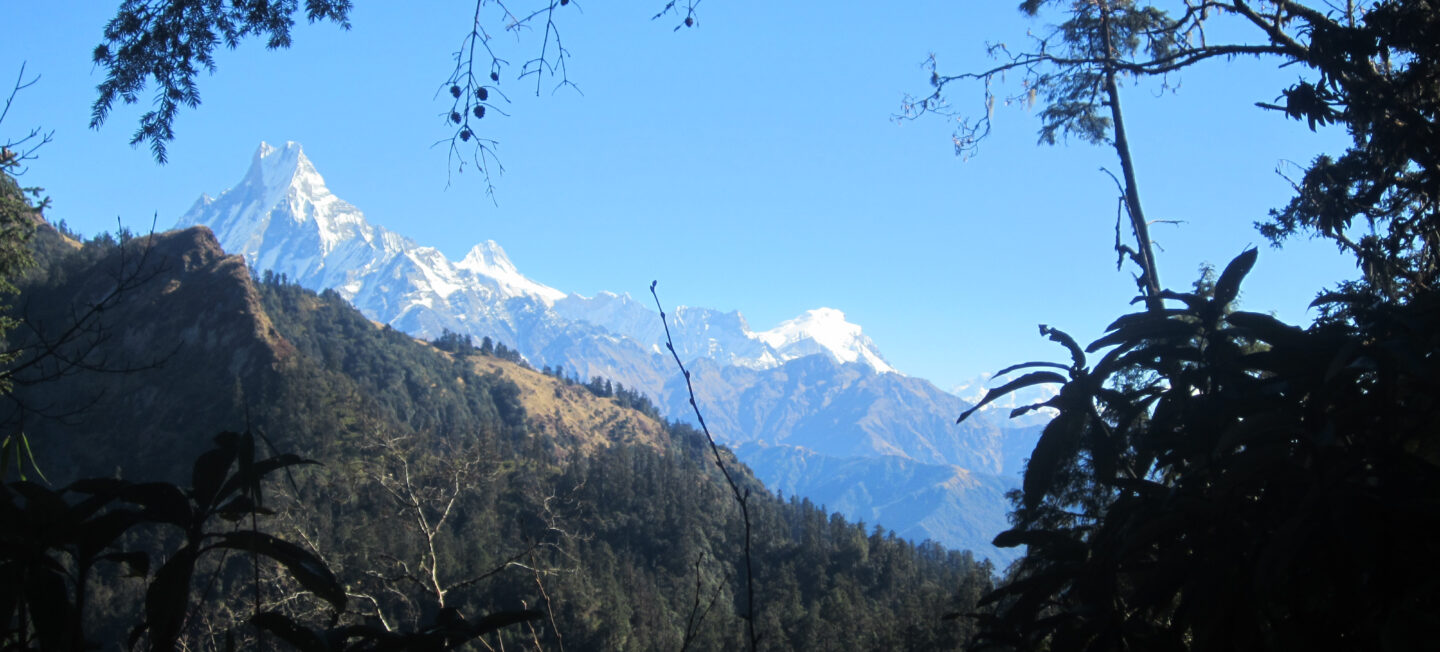
During the Annapurna Circuit trek, you will come across several noteworthy features and attractions. Here are some of the highlights you can expect to encounter along the trail:
- Lush green landscapes and terraced fields are in the lower sections of the trek.
- Charming villages like Bahundanda, Chamje, and Tal, offer glimpses of local culture and traditional architecture.
- Crossing the Marshyangdi River on suspension bridges and enjoying the scenic beauty of waterfalls along the way.
- Entering the Manang District and experiencing the unique Tibetan-influenced culture and traditions.
- Ascending to higher altitudes and witnessing the transition from greenery to alpine terrain.
- Manang village is a picturesque settlement with traditional houses, monasteries, and stunning views of Annapurna and Gangapurna peaks.
- Acclimatization day in Manang to adjust to the increasing altitude and explore the surrounding area.
- Trekking through Yak Kharka and Ledar, surrounded by towering mountains.
- Reaching the Annapurna Base Camp (4,130 meters) in the Annapurna Sanctuary, with panoramic views of snow-capped peaks.
- Exploring the Annapurna Sanctuary and its breathtaking natural beauty.
- Tilicho Lake, is one of the highest lakes in the world, with its stunning turquoise waters amidst the dramatic mountain backdrop.
- Crossing Thorong La Pass, the highest point of the trek at 5,416 meters, offers panoramic views of the Himalayan peaks.
- Descending through arid terrain and following the Kali Gandaki River.
- Passing through villages like Muktinath, Kagbeni, and Marpha, known for their unique architecture, monasteries, and apple orchards.
- Enjoying views of the Nilgiri and Dhaulagiri mountain ranges.
- Reaching Jomsom, a bustling town with a small airport, marking the end of the trek.
These are just some of the highlights you can expect to encounter during the Annapurna Circuit trek. Each step of the journey will unveil breathtaking scenery, diverse landscapes, and cultural gems that make this trek a truly unforgettable experience.
FAQs
What is the best time to undertake the Annapurna Circuit trek?
The best time is during spring (March to May) and autumn (September to November) for stable weather and clear views.
How challenging is the Annapurna Circuit trek?
It is a moderate to strenuous trek, requiring prior experience, good fitness, and careful acclimatization.
What should I bring for the walk around the Annapurna Circuit?
Essential items include appropriate clothing, sturdy boots, a sleeping bag, a backpack, trekking poles, a headlamp, water bottles, a first aid kit, sunscreen, and a camera.
How do I deal with altitude sickness during the trek?
Proper acclimatization, gradual ascent, staying hydrated, and listening to your body are essential to prevent altitude sickness. Descend if symptoms persist.
Do I require a porter or guide for the hike across the Annapurna Circuit?
Hiring a guide or porter is optional. Guides offer local knowledge and safety, while porters can carry heavy bags. Independent trekking is also possible.
Conclusion
In conclusion, preparing for the Annapurna Circuit trek requires careful planning and a packing checklist. Use this comprehensive checklist as a guide to ensure you have all the essential items for a safe and enjoyable trekking experience.
Remember to pack efficiently, prioritize your health and safety, and be prepared for the stunning landscapes and cultural wonders that await you on the Annapurna Circuit.
However, this blog post is intended as a general guide. Adapt the packing checklist according to your personal preferences, trekking season, and the specific requirements of your chosen trekking agency or guide.
You May Be Interested In:

